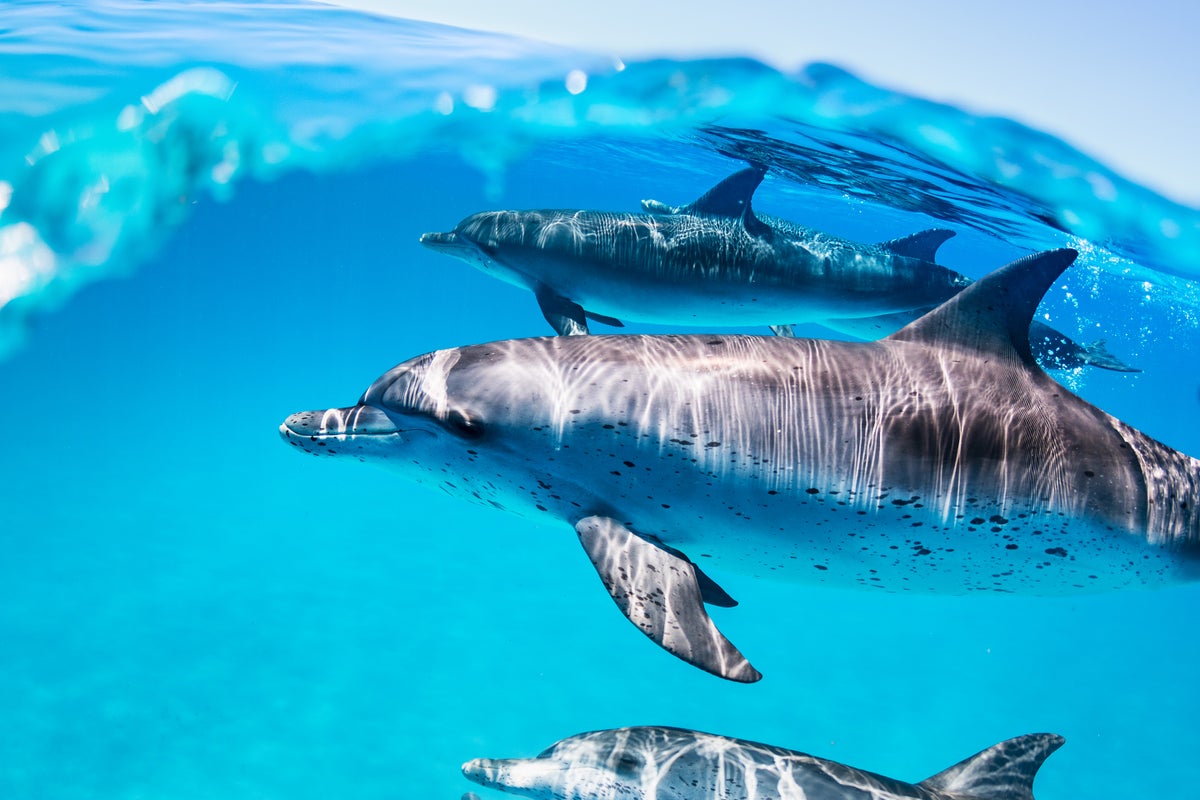Talking Fins: How Artificial Intelligence Could Unlock Dolphin Communication
Technology
2025-04-14 18:45:00Content

In a groundbreaking endeavor, Google is pushing the boundaries of interspecies communication by developing an advanced language model designed to potentially bridge the communication gap between humans and dolphins. This innovative artificial intelligence project aims to decode and interpret the complex communication systems of these intelligent marine mammals.
Researchers at Google are leveraging cutting-edge machine learning techniques to analyze the intricate acoustic patterns and communication signals used by dolphins. By creating a sophisticated language model, the team hopes to develop a revolutionary translation system that could allow for unprecedented insights into dolphin communication.
Dolphins are known for their remarkable intelligence and sophisticated communication methods, using a complex system of clicks, whistles, and body language. Google's AI researchers believe that by applying deep learning algorithms and extensive data analysis, they might be able to create a breakthrough in understanding these marine creatures' language.
While the project is still in its early stages, the potential implications are profound. Imagine being able to understand the thoughts, emotions, and social interactions of one of the ocean's most intelligent species. This research could not only advance our scientific understanding but also open up new possibilities for marine conservation and interspecies communication.
As the project continues to develop, scientists and marine biologists are watching with great anticipation, hoping that Google's innovative approach might finally unlock the mysterious language of dolphins.
Breaking Barriers: Google's Groundbreaking Dolphin Communication Project Promises Unprecedented Interspecies Dialogue
In the rapidly evolving landscape of artificial intelligence and marine biology, a revolutionary breakthrough is emerging that could fundamentally transform our understanding of communication across species. Google's latest research initiative represents a quantum leap in technological innovation, targeting one of the most intelligent and enigmatic creatures inhabiting our planet's oceans.Decoding the Language of the Sea: Where Technology Meets Marine Intelligence
The Computational Linguistics of Marine Communication
Advanced machine learning algorithms are being meticulously developed to decipher the complex acoustic communication systems of dolphins. Researchers are employing sophisticated neural networks capable of analyzing intricate sound patterns, clicks, and whistles that constitute dolphin language. By leveraging massive computational power, Google's team aims to create an unprecedented translation mechanism that could bridge the communication gap between humans and marine mammals. The complexity of dolphin communication extends far beyond simple vocalization. These marine intelligences utilize a nuanced system of acoustic signals that convey sophisticated emotional and contextual information. Machine learning models are being trained to recognize subtle variations in frequency, duration, and modulation that represent distinct communicative intentions.Technological Innovations in Interspecies Communication
Google's approach integrates multiple technological domains, including advanced signal processing, machine learning, and marine acoustic research. Specialized underwater recording equipment captures high-resolution audio data, which is then processed through cutting-edge artificial intelligence algorithms designed to detect patterns and potential linguistic structures. The research team has developed proprietary machine learning models that can distinguish between different dolphin pod communication styles, individual vocal signatures, and potential grammatical constructions. These models represent a significant departure from previous translation attempts, utilizing deep learning techniques that can adapt and learn from extensive acoustic datasets.Ethical Considerations and Scientific Implications
The potential for interspecies communication raises profound philosophical and ethical questions about intelligence, consciousness, and our understanding of non-human cognitive capabilities. By developing technologies that could potentially translate dolphin communication, researchers are not merely creating a translation tool but opening a window into understanding alternative forms of intelligence. Ethical protocols are being rigorously developed to ensure that any potential communication technologies respect the autonomy and natural behaviors of marine mammals. The research emphasizes observation and understanding rather than invasive intervention, maintaining a delicate balance between scientific curiosity and ecological respect.Challenges and Future Perspectives
Despite significant technological advancements, substantial challenges remain in developing a comprehensive dolphin communication interface. The acoustic complexity, contextual nuances, and potential cultural variations within dolphin populations necessitate an adaptive and sophisticated approach. Interdisciplinary collaboration between marine biologists, linguists, computer scientists, and artificial intelligence experts is crucial in overcoming these challenges. The project represents a moonshot endeavor that could redefine our understanding of communication, intelligence, and interspecies interaction. The potential implications extend far beyond academic research. Successful development of a dolphin communication platform could revolutionize marine conservation efforts, enhance our understanding of marine ecosystem dynamics, and provide unprecedented insights into non-human cognitive processes.RELATED NEWS
Technology

Legendary Voices Collide: Nolan North Welcomes Troy Baker to the Indiana Jones Gaming Pantheon
2025-03-24 15:00:00
Technology

Surprise Twist: Bam Margera Sneaks Into Tony Hawk's Pro Skater Remake After Earlier Doubts
2025-03-23 17:41:19






